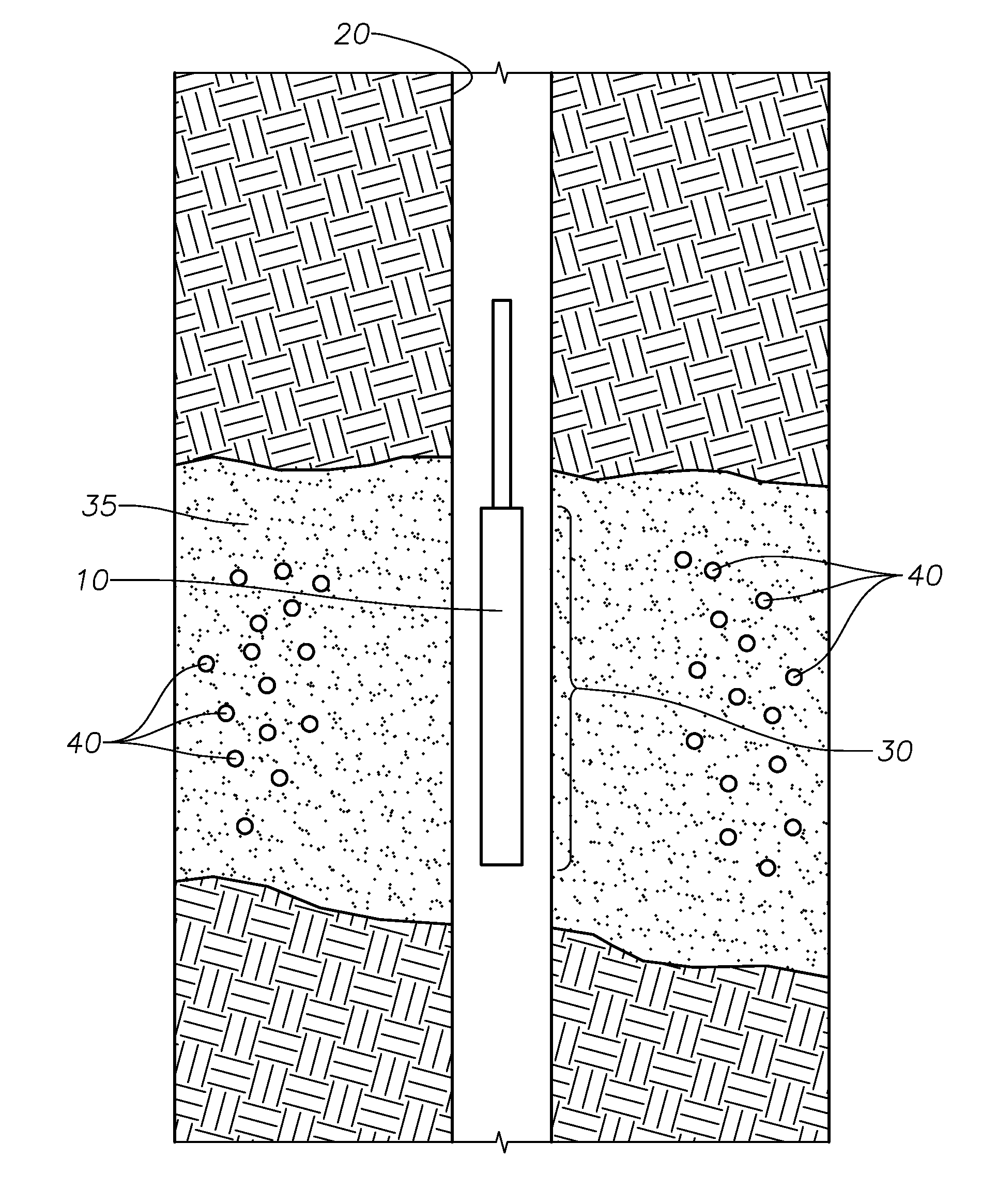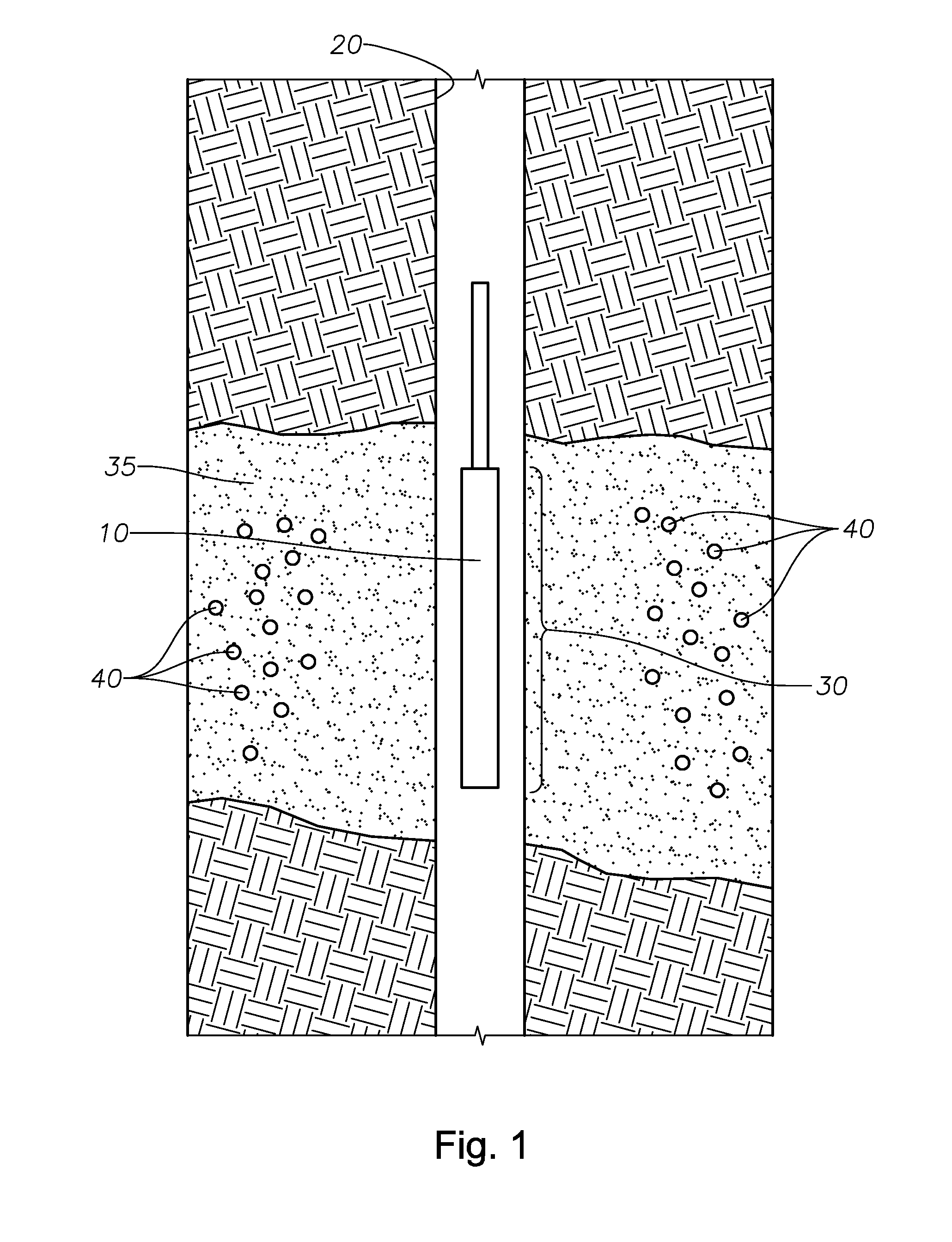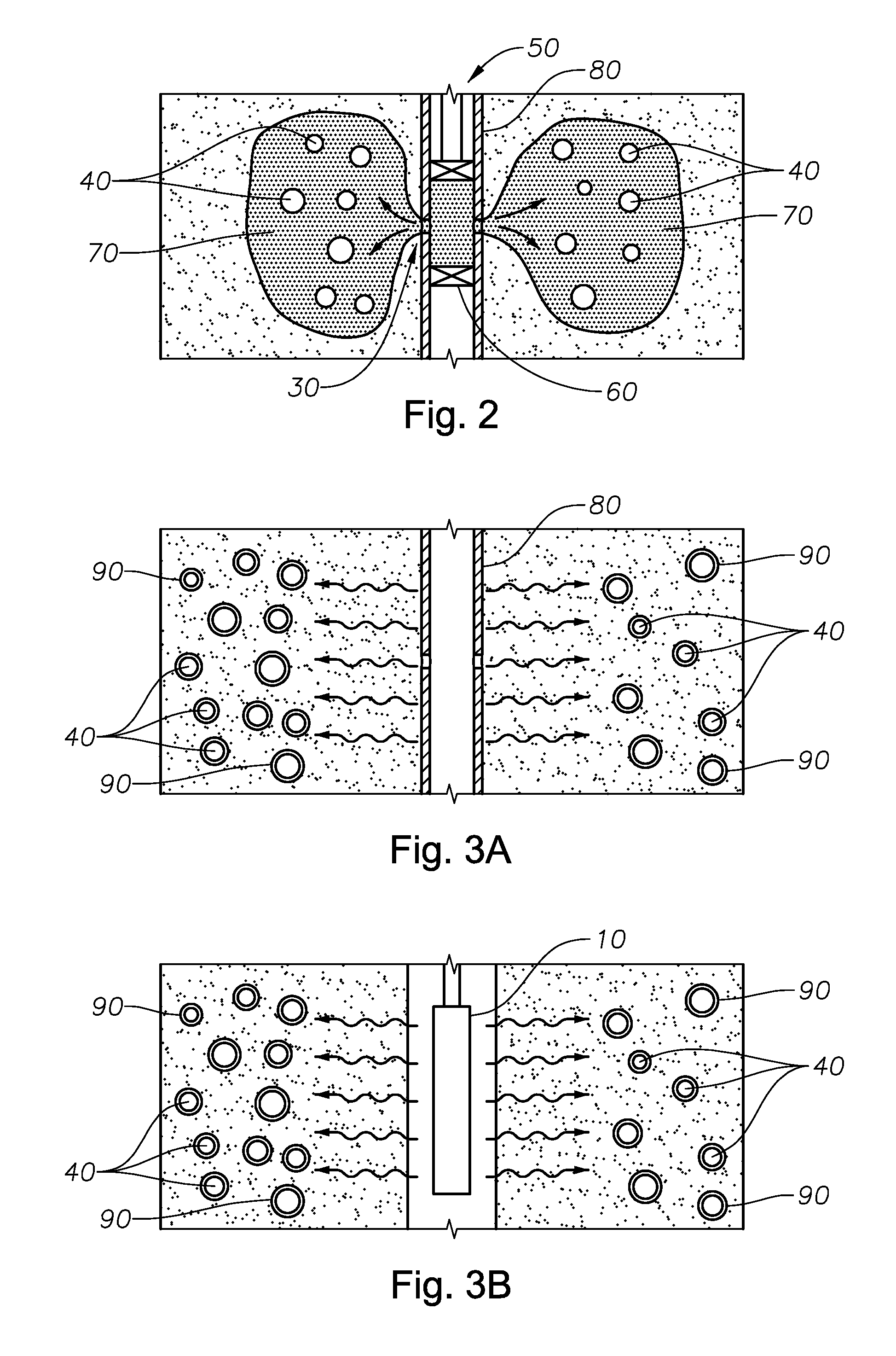Sand production control through the use of magnetic forces
a technology of magnetic force and production control, applied in the direction of wellbore/well accessories, fluid removal, survey, etc., can solve the problems of limiting the ability of sand particles to traverse through the pores within the underground formation, and limit the amount of sand produced, so as to reduce the amount of produced sand
- Summary
- Abstract
- Description
- Claims
- Application Information
AI Technical Summary
Benefits of technology
Problems solved by technology
Method used
Image
Examples
Embodiment Construction
[0020]In FIG. 1, magnet source 10 is disposed within wellbore 20 proximate producing section 30 of the underground formation. Magnetized loose sand particles 40 can be either repelled or attracted to magnet source 10 depending upon the desired function. For example, in one embodiment of the present invention, the polarity of magnet source 10 and magnetized loose sand particles 40 are the same, such that magnetized loose sand particles 40 experience a repulsive force. In another embodiment of the present invention, the polarities of magnet source 10 and magnetized loose sand particles 40 can be opposite, such that magnetized loose sand particles 40 experience a pulling force towards magnet source 10. This can advantageously allow for a controlled cleaning of the underground formation of magnetized loose sand particles 40. In one embodiment, the magnet source is proximal to the formation perforations. Magnet Sales & Manufacturing Company, Inc provides customizable magnets. Those of or...
PUM
 Login to View More
Login to View More Abstract
Description
Claims
Application Information
 Login to View More
Login to View More - R&D
- Intellectual Property
- Life Sciences
- Materials
- Tech Scout
- Unparalleled Data Quality
- Higher Quality Content
- 60% Fewer Hallucinations
Browse by: Latest US Patents, China's latest patents, Technical Efficacy Thesaurus, Application Domain, Technology Topic, Popular Technical Reports.
© 2025 PatSnap. All rights reserved.Legal|Privacy policy|Modern Slavery Act Transparency Statement|Sitemap|About US| Contact US: help@patsnap.com



